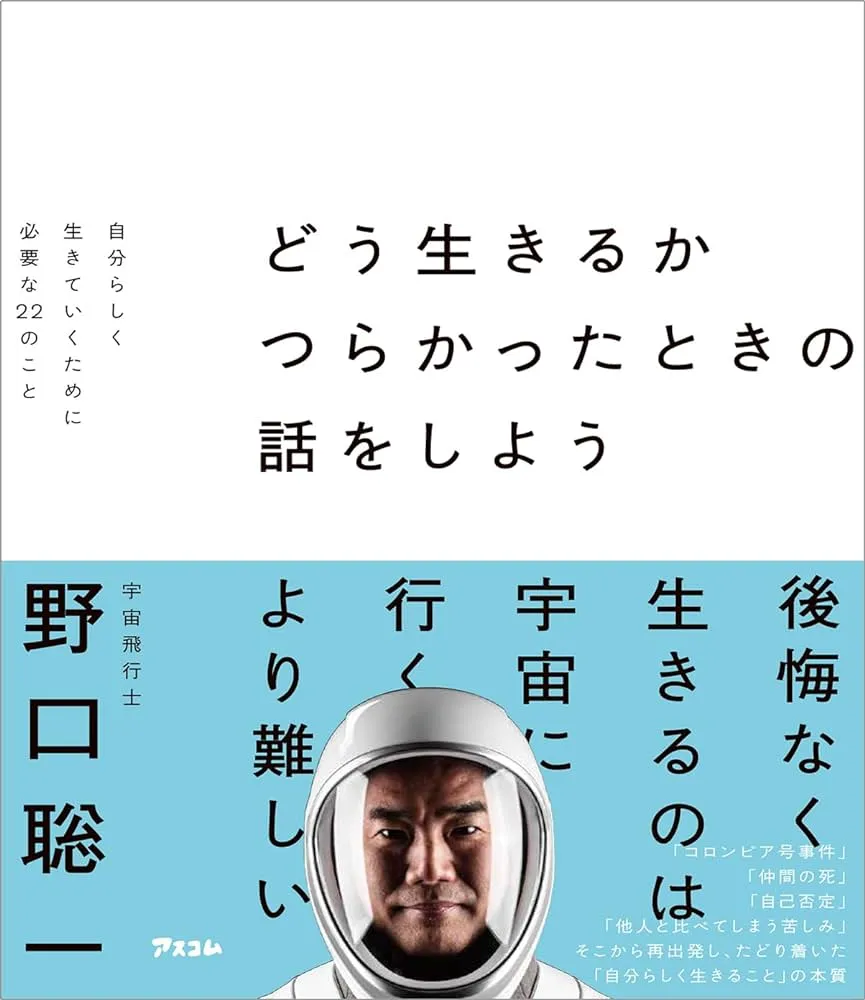
The Book in 3 Sentences
- The book is a Japanese book that explores the challenges of life and provides insights on living authentically.
- The author, a former JAXA astronaut, shares his personal stories and discusses 22 essential things necessary to navigate difficult times and live true to oneself.
- Through a thoughtful exploration of various aspects of life, the book aims to guide readers towards a more genuine and fulfilling existence.
Impressions
How Did I Discover It?
I began noticing his increased presence on TV shows recently. In one of the shows, he mentioned his recently published book, and the title sounded interesting. Familiar with him through his career as a JAXA astronaut, I was always intrigued by his perspectives on life. I wanted to see what he had to say, so I decided to give the book a read.
Who Should Read It?
This book is recommended to individuals seeking insights on navigating challenging moments in life and striving for authenticity: those interested in personal development, self-discovery, and practical advice for living a more fulfilling life would likely find the book valuable.
Additionally, readers who appreciate personal anecdotes and a thoughtful exploration of essential life principles may find this book particularly engaging.
How the Book Changed Me
1. Validating Personal Beliefs
Personally, I didn’t find that he presented anything entirely new to me; however, his perspective as an astronaut infused a unique and meaningful quality into a seemingly common message.
The book affirmed what I believe is crucial in navigating life.
For instance, the author highlights, “To move forward, it is necessary to take the time to pause and reflect. However, when too busy, one cannot engage in introspection, lacks the ability to establish personal criteria, and ends up being swayed by the values, assessments, and goals imposed by others.” (人が前に進むためには、立ち止まり内省する時間が必要です。 しかし、忙しすぎると内省することができず、自分自身の判断基準を持つことができず、他者の価値観や評価、他者から与えられた目標などに振り回されて人生を終えることになってしまいます。)
I distinctly recall expressing this sentiment to my parents during my high school years. They dismissed my viewpoint, emphasizing the importance of continuous pursuit and hard work toward goals, a strategy that had worked for them and was, in their eyes, the right way to live.
I appreciate discovering the author’s support for what I felt during my high school days.
2. Mindset Shift for a Large Audience
Despite the first point, I believe that reading about the author’s experiences and the principles discussed in the book could still prompt a mindset shift for many readers, encouraging them to approach difficulties with a different perspective and adopt a more proactive and positive outlook.
3. Japanese Cultural Insight
The book provides valuable insights into the author’s background and the values shaping his advice, fostering a deeper understanding of diverse cultural approaches to life, particularly for those unfamiliar with Japanese perspectives.
As an illustration, the author discusses the tendency of Japanese men, rooted in the corporate culture of Japan, to struggle with facing and expressing their emotions and stories.
He attributes this to the enduring societal belief that “adults should not openly express emotions in public,” prevalent in Japan’s corporate environment, where maintaining a neutral demeanor is often emphasized.
Even for someone like me, a local with almost a lifetime in Japan, it’s enlightening to gain a fresh perspective on the analysis from a Japanese man who has experienced many more years in Japanese society.
My Top 3 Quotes
- “When you distance yourself from the values, evaluations, goals, and roles imposed by others, it becomes a clue to finding the core of your identity, as well as the direction, goals, and mission in life. This involves understanding three key aspects:
1. What you like.
2. What you are capable of.
3. What you hold dear.
To build your identity on your own, three necessary steps are:
Step 1: Determine your own values and sense of purpose.
Step 2: Take stock of yourself and identify what remains.
Step 3: Attribute meaning to your past choices and life experiences.”
(他者の価値観や評価、他者から与えられた目標や役割から離れたとき、自分のアイデンティティの核となり、人生の方向性や目標、果たすべきミッションを見出す手がかりとなるのは、1. 自分は何が好きか、2. 自分には何ができるか、3. 自分は何を大事にしているかの3つだということ、そして自分一人で自分のアイデンティティを築くためには、次の3つのステップが必要だということです。ステップ1 「自分の価値と存在意義」を自分で決める、ステップ2 自分の棚卸しをし、最後に残るものを見極める、ステップ3 これまでの選択、人生に意味づけをする)
- “Well then, what should one do to overcome fear? Based on my own experiences, I believe there are three essential things for that. First is ‘thoroughly identifying the true nature of fear,’ second is ‘gaining insight into what can be obtained by overcoming fear,’ and third is ‘concentrating on the present and making progress, even if it’s gradual.’” (では、怖さに負けないためにはどうすればいいのか。 僕は自分の経験から、そのために必要なことは3つあると思っています。 一つ目は「怖さの正体を徹底的に突き止めること」、二つ目は「怖さを乗り越えたときに得られるものを見通すこと」、そして三つ目は「目の前のことに集中し、少しずつでも前進すること」です。)
- “Instead of pursuing the ‘external approval-seeking,’ if you can discover the ‘self-actualization desire within,’ you should realize that building solid relationships with those around you is not just a ‘means’ for approval but a ‘purpose’ for self-actualization.” (「ソトからの承認欲求」を追い求めるのではなく、「自分のナカにある自己実現欲求」を見つけることができれば、自分の周りにいる人たちとの関係をしっかり築くことが、承認欲求実現のための「手段」ではなく自己実現のための「目的」であることに気づくはずです。)